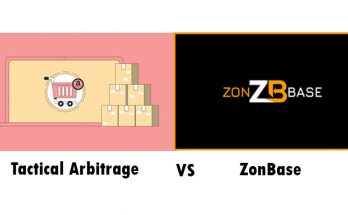If individuals want to get the best deal possible for their homes, they need to pay cash. If they’re going to outbid other buyers looking at the same property, they need to pay cash. If they want to purchase a fixer-upper that traditional banks are leery of financing, they need to pay cash. If they cannot afford an all-cash property purchase, they might try to delay financing (DF).
This thing is a way of buying a real estate property in which individuals pay in cash in advance. Shortly after that or immediately get a cash-out refi to mortgage the house, which returns a huge amount of their money to them. It provides individuals with the best of both worlds – they get the benefits of paying cash in advance while still able to finance the debenture over time.
Advantages
At first look, it may sound like the old stories about trying to lengthen blankets by cutting a foot off on one end and sewing it on the other. Why pay upfront with cash if they are just going borrow the fund back again? But there can be good reasons for taking this approach.
Sellers will favor individuals with hard cash in hand over any other types of buyers. People can usually get a good price by offering hard cash or at least get their bid accepted over the same offers that need a couple of weeks to arrange to finance.
Rich investors have flooded the United States housing market in the past couple of years, snapping up real estate properties and paying in cash. All-cash transactions account for one-fourth of all existing real estate sales, according to NAR or the National Association of Realtors. That is down from a level of one-third just last year.
Cash purchases are especially very common on the bank-held properties that were foreclosed, so if people want to compete for one of these deals, paper money is their friend. Delayed funding can be a good alternative to a Federal Housing Administration 203K housing loan to purchase a property and fix it.
With 203K plans, individuals can borrow both the funds and purchase prices to improve or repair the real estate as part of a single housing loan. But with a Federal Housing Administration debenture, people have to pay a good amount of money as a fee for up-front housing debenture insurance and ongoing monthly loan insurance premium as well.
When it comes to DF, people can avoid the cost of insurance completely by maintaining more or less 20% equity in the house. But people cannot borrow more than the amount they paid for the house for at least eight weeks after they purchased it.
They can also use this type of financing to rehabilitate and purchase a house that will not currently pass a property inspection or otherwise will not qualify for housing loan financing. Individuals purchase the home and restore it using their own money; then, when the job is completed, they take out cash-out refi plans to recover a huge amount of money they put into that project, thereby regaining monetary liquidity.
Again, people are limited to borrowing more than the price of the house. Empty-nesters or retirees may want to consider this type of funding when downsizing to a much smaller house or to improve cash-flow positions in lieu of reverse mortgages. People draw upon their properties or sell their existing real estate assets to pay upfront for a new house, then take out cash-out refi plans to free up funds that would be tied up in the new property.
This type of financing can also be used as a connection debenture to cover the term between when individuals purchase a new house and sell their old one. Suppose the broker of the new house will not wait for the buyer to sell their old one before closing, and they cannot get a housing loan for the new one. In that case, as long as they are making regular payments on the old property, they can use this kind of financing to pay upfront for the new home, then refi it into a standard housing loan once the old property has been sold. Want to know more about different types of debentures? Click sites like https://www.lånpådagen.org to find out more.
Physical money is temporarily tied up
Of course, the primary limitation of DF is that people have to be able to assemble the physical money in advance to make the purchase. This type of financing does not provide individuals with additional money; it only allows people to temporarily recover funds that they have tied up in purchasing a new home.
This type of financing works for individuals who have the assets to purchase a house outright but need to hold on to those assets for other purposes like investments or retirement savings. It allows people to draw on these assets to temporarily purchase the house, then repair or restore them with the money obtained by refi options.
In some instances, it can make better monetary sense than trying to arrange traditional housing loan financing. This thing is usually used in buying multi-million dollar properties, with funding set through non-agency markets – debentures that are not backed by financial institutions like Federal Housing Administration, Freddie Mac, or Fannie Mae, and so are not subject to limits and rules set by these organizations.
But Fannie Mae has a DF scheme in place, making this plan affordable and readily available for individuals planning to use it for less expensive properties. Fannie Mae DF is readily available on houses priced up to the loan limits, which range from $417,000 to $630,000 for single-family properties, depending on the location. The DF option is readily available up to eight weeks after the purchase, after which traditional refi or equity financing schemes become available.
Can tap more or less 70% of equity
This thing can be used for investment properties, second houses, or primary homes. Owners of primary residences may take out up to 70% of the property’s value when availing of a refi scheme; the limit is sixty percent for second homes, as well as investment properties.
Buyers need to be able to show where they get the money used to purchase the house. If a HEL or other kind of housing loan was used, proceeds from DFs need to be used to pay these debentures first. The purchase of the house has been an arms-length. It means the thing can’t have been bought from one’s business partners, parents, or others with close relations to the buying party.
Similarly, there may be no current clients like HEL or other home loans on the property. The original comparable documents or HUD-1 need to be provided to show proof of sale, as well as to show the home was purchased free of any liens or mortgages.
It is a somewhat unusual housing debenture product, and not all lending firms will offer this kind of plan. It is an excellent idea to talk to loan officers or experts who are experienced in working with DF and understand the inner workings of this type of loan, as well as the different requirements that need to be met. People also need to make sure that loan officers explain to them the benefits and downsides of this debenture compared to other options.





